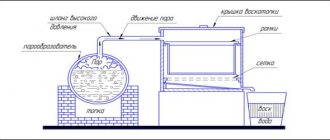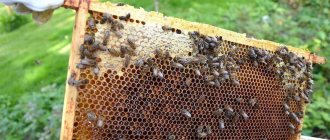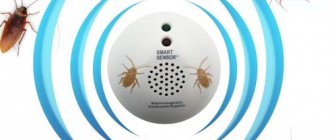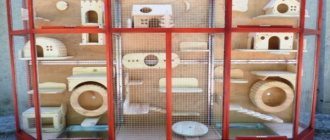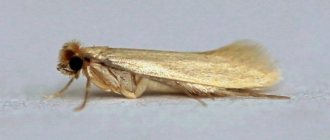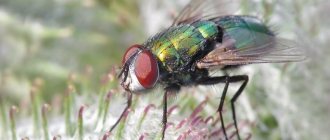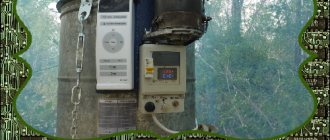Summer is the favorite time of year for most people in our country. But there are also several unpleasant aspects that appear with the arrival of warm days. And one of these moments is the invasion of flies and mosquitoes. They buzz unpleasantly and spread various diseases.
How to get rid of these harmful insects? You can buy a chemical at the store. But there is already enough chemistry in our lives. There may be allergies to various aerosols, especially in children. Therefore, many people prefer homemade devices.
Homemade adhesive tape or Velcro for flies
This tape is effective against all types of flies, but it is especially effective against omnivorous and herbivorous species. Other winged insects, including mosquitoes and midges, stick to the tape largely because they choose it as a resting place. Knowing the preferences of flying insects to sit on ceilings and chandeliers, it is better to hang adhesive tapes in the upper part of the rooms. To make adhesive tape you will need:
- Thick paper, cut into long strips 4-6 cm wide. You need to attach a loop to one end of the strip, from which it will be convenient to hang the trap.
- Rosin – 200 ml.
- Castor oil – 100 ml.
- Turpentine – 55 g.
- Granulated sugar – 4 tbsp. l.
- Water – 4 tbsp. l.
You need to boil syrup from water and sugar, bringing it to a yellowish-brown color. When the syrup has cooled a little, add rosin, turpentine and castor oil to it, mix everything thoroughly. Then soak strips of paper with this mixture and hang traps in places where flies are most concentrated - in the kitchen and veranda, above the entrance to the house and window openings, in the toilet.
The ribbons will attract flies with their smell, as well as the opportunity to sit on a surface that is comfortable from the point of view of insects. These devices remain sticky for a long time, so they need to be changed as they become filled with insects.
The given composition of sticky bait is very effective, but if the only thing you have in your house is sugar, you can get by with sugar syrup. The main thing is to make it so thick that flies stick to it well.
Take the container with tongs, place rosin on it and start heating. Wait until the mixture boils and hold for 1-2 minutes until all the turpentine evaporates.
Add oil to boiling rosin and heat the mixture for another 30-60 seconds. Castor oil can be poured out with a syringe. Be careful not to get the oil into the fire to avoid burning your hands or causing a fire. Fat burns well.
Wait until it cools completely. After 10-20 minutes the mixture will thicken. If the proportion is chosen correctly, the glue will be moderately thick. To check the condition, take a match and dip its tip into the impregnation. When you remove the match, the thread of glue should stretch out more than 10 cm. The mixture should be plastic - the torn thread that sticks to the match should be pulled together into one drop.
Prepare paper, fastened sticks, a match for spreading and the glue itself. If you have a standard sheet of paper and not ready-made tape, cut a strip of it 10 cm wide and 30-40 cm long.
Insert the tape between the sticks fastened at the base as shown in the image. Wrap the strip around the sticks twice and tighten slightly until it is firmly in place.
Apply glue to the tape. Holding it by the sticks with one hand, spread the impregnation over the entire strip with a match. Try to keep the layer even, but don't overdo it. There is no need to cover all the paper with glue. For a 30 cm tape, 3-4 heavy drops of glue (as in the photo) are enough.
Proven folk methods
Before resorting to radical measures to destroy parasites, if there are large numbers, it is worth trying to drive them out. Our grandmothers used this ancient method.
They took a towel or branches of any tree with leaves in their hands, stood on the opposite side of the room from the open door, and, waving in a circular motion, drove the flies up and down towards the door. It will not be possible to get rid of all the insects, but some of them will end up outside the apartment.
Another method that does not require complex manipulations. It is necessary to darken all the windows in the room, with the exception of one, which will be a kind of light trap. Flies don't like the dark; they will fly towards a light source and end up outside. This method is not 100% effective, but other means will help exterminate the remaining insects.
Using a fly swatter, or objects that replace it - magazines or newspapers rolled into a tube. The method does not require material costs, the disadvantage is that traces of crushed flies remain on the surfaces.
Flies cannot stand the smell of alcohol; if you spray vodka from a spray bottle in a room, the insects will leave it. The method is good for an apartment or cottage, but it cannot be used in an office; problems may arise.
Aromatic essential oils repel insects; flies do not like the smells of such herbs:
- lavender;
- peppermint;
- eucalyptus;
- lemongrass;
- citronella;
- carnations;
- anise
Essential oils of these plants are added to water when cleaning rooms, and their solutions are sprayed on doors and window frames. They soak cotton pads or balls and place them on window sills, kitchen tables, and near trash containers.
You can make your own poison for flies. To 3 tablespoons of milk add 5 teaspoons of baking soda and 0.5 tablespoons of formaldehyde. Place a saucer with the mixture with the addition of crumbled bread at the location of the insects.
The product takes effect within a few hours, and after consumption the insect dies. Sweet water with ground black pepper is a mixture that is harmful to flies.
Place bouquets of herbs: tansy, castor bean, elderberry flowers, fern leaves in the room, the flies will leave the room.
A decoction of the toadflax herb is a good insect repellent.
Flies don't like the smell of cloves. Cut a lemon in half, bury 5-10 clove buds into the pulp, the aroma will repel pests for a long time. You can simply spread the buds or make a decoction and spray it on doors and windows.
The smell of geranium is unpleasant to flies; an indoor flower on the windowsill repels pests.
Basil is planted near the house; flies do not like this fragrant plant.
Bay leaf helps in fighting flies. The leaves can be laid out on windowsills, in table drawers, or prepared as a tincture; You need to take 10-15 leaves per glass of boiling water and leave for 24 hours. Wipe window frames and doors with the solution.
Place dried lavender flowers in bags or bouquets around the house, you can add clover.
Bottle trap for flies and fruit flies
This is a closed type trap, but it will also attract insects with a sweet smell and catch them with a sticky substance. To make it, use a regular 1.5-2 liter plastic bottle of water or soda.
- The top third of the bottle needs to be cut off, and 200-300 ml of viscous sugar syrup should be poured into the bottom of the lower part. You can add a little honey, beer or fruit juice or fermented jam to the syrup. The consistency should be viscous enough so that insects quickly drown in it and are unable to escape.
- Insert the cut top part of the bottle into the bottom part with the neck down, without a cap. Fasten the two parts with a stapler or tape.
- In order for flies and flies to more actively fall into the bottle, its edges should be lightly greased with sweet syrup and placed where insects fly most often.
If you plan to place the trap outside, it is better to add a little white vinegar to it to repel honey bees and thereby protect them from death.
The cutest option is the Australian cabinet trap
This trap can be used outdoors - for example, near a dining table under a canopy in a country house, since its catching capacity is quite high, and maintenance operations are performed extremely rarely.
Externally, the flytrap looks like a bedside table made of a wooden frame with small legs, covered on all sides with a fine mesh, under the bottom of which a saucer with a sugar-containing liquid is placed. The secret of catching flies lies in the pyramidal shape of the mesh bottom of the trap, in which there is a hole. As a rule, when they are full, flies fly up, not paying attention to the transparent mesh . As a result, insects enter the flytrap through a hole in the bottom.
For manufacturing you will need the following materials:
- Wooden planks about 30 cm long.
- Canopies.
- Hinged hook with a bracket to secure the lid when closed.
- Self-tapping screws for wood and metal.
- Metal fine mesh. It is important that a fly cannot get into the cell.
- Sealant.
The process of making a flytrap is as follows:
- Assemble a frame from wooden planks in such a way that the entire structure stands on legs about 5 cm high, attach the upper part to canopies and equip it with a hook.
- Cover all sides except the bottom with metal mesh.
- Make a pyramidal bottom of the trap from the mesh, connecting the seams of the mesh with metal screws; you can also use staples for a furniture stapler for this.
- Attach the bottom to the frame of the trap with wood screws.
- At the top of the pyramidal bottom, cut a hole 2 cm in diameter so that flies can enter the trap through it.
- Seal all joints between the mesh and wooden planks with sealant.
- Place the trap in the required place, after placing a saucer under it with a luring liquid - sugar syrup or jam. You can also use industrial fly attractants.
The advantage of this flytrap is that it requires relatively little maintenance, since sometimes you only need to release the flies from the trap and also replace the attracting liquid in the saucer.
"Skillful hands"
When starting to make Velcro, you should not forget that flies are very mobile and do not stay in one place for a long time. This must be taken into account when choosing a high-quality adhesive base, which should reliably hold and destroy an insect that touches it even for a brief moment.
To make a trap, you need to prepare a sticky mixture that will cover the fly fly. There are a large number of different recipes, which include accessible and inexpensive ingredients. You can make an adhesive composition based on the following ingredients:
- rosin 0.2 kg, turpentine –50 g, castor oil 0.1 kg, sugar syrup or molasses – 50 g;
- rosin 0.4 kg, honey 0.1 kg, castor oil, vaseline or machine oil 200 g, glycerin 40 g;
- pine resin 300 g, linseed oil 150 g, wax 10 g, honey or sugar syrup 50 g;
- rosin 0.3 kg, linseed oil 200 g, honey 60 g.
- rosin 30g, castor oil 20g and a little honey or any jam.
Making Velcro for flies
The work of preparing the adhesive base is carried out according to the same principle - resins and rosin are melted in a water bath, brought to a boil, and then other components are added to the resulting mass.
The basic proportion of rosin and oil is 2:1. It can be adjusted to obtain the required density of the composition. The “correct” glue should stretch into a thin “thread” of 100 mm or more.
There is an even easier way to make sticky fly tape. In this case, special ALT glue is used as the main substance that attracts and retains flies. It is used to catch rodents and various insects. The composition of the drug is non-toxic and has an undeniable advantage over homemade mixtures. The glue does not dry out and retains its properties for a long time. Velcro based on it will fight flies until there is no free space left on it from insects.
I made Velcro from ALT glue. Works great.
Where do flies come from in the house?
The surest way for flies to enter a house is through open windows, balconies, and doors. Insects can also enter your home through ventilation or cracks in windows and walls.
Types of flies
It is easier to exterminate pests if you know the peculiarities of their life activity depending on the species.
Flies usually enter living spaces:
- Small rooms. It’s hard not to notice, since their favorite places in the apartment are hanging objects and lamps.
- Yellow fruit flies. They appear in places where fruits and vegetables are stored, as their larvae develop in rotting products.
- Green meats. They fly to the smell of meat, fish, and fruit.
- Sinatropic.
- Cheese.
- Greasy.
- Sour midges.
All representatives of winged creatures also lay larvae in food and other secluded places in the apartment.
Housefly development cycle
The development of a housefly goes through 4 phases.
- Laying eggs. An adult is capable of producing 500-2000 eggs in a lifetime. Typically, insects breed in a suitable moist environment, which can be compost pits, sewers, and garbage dumps.
- Larval development. The larvae appear within 8-24 hours and continue to develop in the environment where the eggs were laid. Larval growth and transition to another phase lasts 7-14 days.
- Pupation. Once the larva is ready, it crawls to a dry place and pupates. The insect lives in this position for 25-30 days.
- Emergence of an adult. The fly leaves the cocoon and continues to live in its usual form. The life span of an adult insect is 30–35 days.
Knowing where the pest lays its eggs, you will get rid of not only adults, but also their larvae. Considering that flies breed only in a humid environment, carefully monitor the humidity in the apartment.
Habitats in the house
The favorite habitats of flies are garbage chutes and landfills. Despite this, insects are frequent guests in the apartment. Here they can live in the kitchen, balcony or room. The pest flies to the aroma of food or other substances, therefore:
- throw away garbage on time;
- wash dishes immediately after eating;
- store food in airtight containers or the refrigerator;
- remove crumbs from the table in a timely manner;
- carefully monitor the cleanliness of your pet’s dishes and cat litter;
- Pay attention to indoor plants, as too wet soil attracts insects.
Sometimes arthropods appear indoors from eggs if they were previously laid in a secluded place by an adult. There are frequent cases of flies entering the house through cracks in the walls from neighbors.
If this is a private house, flies enter it from the yard, where there are huge reserves of food for insects. In particular these are:
- a garden where there are rotten berries, fruits or vegetables;
- outdoor toilet;
- compost or cesspools;
- sheds where pets live.
To get rid of flies forever, fight comprehensively. Eliminate populations in the yard and outbuildings. Keep the entire territory of your country house or cottage clean.
It happens that flies get into not only residential, but also industrial or public premises, for example:
- factories or workshops for processing and producing products;
- catering points;
- grocery stores;
- various institutions with canteens and toilets.
In such places, it is extremely difficult to combat insects, so it is better to prevent their appearance and take preventive measures.
At what temperature do fly eggs die?
The fight against flies must be carried out comprehensively, namely, to get rid of not only adults, but also larvae. You can destroy fly eggs using temperature exposure, as they remain viable at temperatures from +8 to +52 degrees. If you notice a clutch of larvae, just pour boiling water over them and they will die.
At what temperature do flies live?
You've probably noticed that flies appear in your home only in the warm season. The fact is that most species of insects suddenly die when the temperature reaches -12 degrees. Some species cannot even withstand -8 degrees. The ability of adults to lay eggs is lost as soon as the air temperature drops to +1 degree.
During the autumn-winter period, resourceful winged creatures hide in livestock buildings, where a warm environment is usually maintained.
Trap for flies and midges
Small midges that appear in an apartment in the summer (and sometimes in other seasons) are usually fruit flies and wine flies. They appear in the apartment when food suitable for them appears in it - rotting fruits and vegetables, fermented jam.
The easiest way to make a fly trap at home is:
- Take a glass, pour some red wine, kvass, beer or fermented jam into it. For a better effect, you can add a slice of any spoiled fruit.
- Cover the top of the container with film - food or plastic film will do. The film must be stretched so that it forms a flat surface on the neck of the container. Scotch tape or a rubber band will help secure the film in this position.
- Make small holes in the film layer. It is best to pierce them with a toothpick.
The midge trap is ready. Place it in the place where they appear most often, and change the bait as the container fills with insects. Through the holes, the flies will penetrate inside the bait, stick to it and drown, and will not be able to get back out.
Glass jar with funnel
Take a medium-sized jar and place bait inside (the options from the first example are suitable). Place a funnel on the neck of the jar. You can start using it.
- We buy and install an air conditioner
- Do-it-yourself windmill - the best ideas and instructions for building decorative windmills in the garden and on the site (105 photos)
Do-it-yourself walk-behind tractor - how to make a simple and reliable homemade walk-behind tractor for farming (105 photos)
Both of these traps can be made poisonous by adding an insecticide to the liquid bait.
Criterias of choice
In order to choose a quality product that satisfies all your needs, you need to know the following:
- For an area of 10-15 sq. meters you will need 1-2 meter adhesive tapes.
- Flies love blue , so you can choose the same color for the ribbon.
- The tape in the package should not be leaking or have an unaesthetic appearance; this indicates that it was stored incorrectly. It should be tightly packed.
- The trap should be easy to remove from the packaging.
- The trap should immediately attract the attention of insects.
- It is better to purchase several small traps and place them throughout the room.
Plastic container
This do-it-yourself trap option is suitable for fruit flies (another name is fruit flies), because they are small in size and, accordingly, can easily fit into small holes.
In the container we put the favorite delicacy of fruit flies - spoiled fruits. Cover with cling film so that it fits snugly to the edges and make several holes in it.
You can use a glass instead of a container. In principle, any trap will be effective for fruit flies if it contains spoiled fruit as bait.
Outdoor fly trap
This trap is effective against dung and blood-sucking flies, mosquitoes and other midges. You can place it in the local area, next to the outdoor toilet, chicken coop, barn.
How to do:
The light bulb will additionally attract insects at dusk. They will land on the body of the trap and receive a lethal dose of poison.
Main types of homemade traps
Lures. The principle of action of baits is to lure the fly into a confined space from which it cannot escape.
Poison traps are similar in design to regular baits, but their purpose is to kill insects and not just lure them.
Velcro.
Stun guns and electric nets. Shockers kill insects with electric shock. The nets attract flies with a bright light, and then draw them into the trap with a makeshift fan.
Let's take a closer look at how you can make the most common fly traps with your own hands.
Fly-eating plant
I really like the third method of fighting flies. But I can't afford it. It is based on the breeding of flytrap plants. They look very beautiful, catch flies very well, and most importantly, you don’t need to do anything for this. The plant is smart enough and can handle them on its own. I would love to buy a couple of these plants for my home, but I haven’t seen them anywhere in our flower shops. Maybe someone can tell me where I can buy at least seeds for breeding them? One more thing, you need to understand that such home helpers are very poisonous, their juice is very dangerous for humans (if taken orally) and can cause poisoning, so do not allow pets and especially children near them. By the way, mint, lavender, and eucalyptus also repel flies; they should also be grown on the windowsill.
Plants that flies eat
Predatory plants are a rather exotic way of catching flies, but they can still help get rid of several annoying insects. The following species are most often grown indoors:
- Venus flytrap. This flower loves light and high humidity, but if these conditions are violated, the leaves turn into ordinary ones and lose their ability to catch flies.
- Sundew. The peculiarity of its cultivation is the low temperature in winter, which should not exceed 10 degrees. This plant also needs bright light and watering with soft water.
- Darlingtonia. The plant is native to California. It loves humidity, and in the winter it goes into a kind of hibernation, without showing predatory activity.
Trap from a jar and an ultraviolet flashlight
This remedy is relatively effective against all types of flying insects.
To make it you will need:
- scotch;
- glass jar;
- a small ultraviolet flashlight, for example, in the form of a keychain.
You can wrap the jar with tape with the adhesive side facing out, or you can transfer the adhesive layer to the surface of the jar itself.
In the second case, the outside of the jar should first be wiped with a cloth soaked in alcohol, vodka or cologne to degrease the surface. After this, you need to wrap the jar with tape with the adhesive side inward, without touching the glass surface with your fingers, and expose it to the sun for 2-4 hours. After this time, the tape must be carefully removed. The adhesive layer will remain on the jar. The first option is, of course, simpler, but the second is more effective.
Place a UV flashlight in the prepared trap and place the trap in the area where flies fly most often. Insects attracted by the light will land on the surface of the jar and stick to its surface.
How to make an electric shock flytrap
We will need:
- Energy saving light bulb;
- high voltage module;
- insulating tape;
- hot glue;
- AA battery.
Manufacturing:
- Let's disassemble the light bulb. We should still have a plastic case. And also a glass cone made of fluorescent tubes, mounted on a plastic base.
- We drill holes in the plastic on both sides.
- We take aluminum wire and thread it through one of the holes. We wrap the wire around the light bulb. Cut off the excess.
- We do the same with the second hole.
- There are 2 wires on the inside of the plastic base. We wrap one of them around the tip of the wire and bend it.
- We have 2 contacts left: another wire and a second wire.
- We connect the high-voltage module to the battery via a switch.
- We make a hole in the case and insert the switch.
- We insert the module into the case, now you need to solder all the necessary wiring.
- Solder the module wires to the battery.
- We fix it with electrical tape.
- To make the module hold better, we glue it to the body with hot glue.
- Then we insert the light bulb into the housing so that its contacts are in contact with the contacts of the high-voltage module.
- We twist it. Our stun gun is ready.
- We turn on the device. Flies will strive for the light from the lamp, but as soon as they fly up to the shocker, they will be electrocuted.
Attracting insects with light, electrocutes them
Operating principle
Sticky tape is one of the safest means used to kill flying insects. And this nuance is especially important when the trap is used in a room where children live or food is prepared.
Fly Velcro is a simple design that has a viscous and sticky component. The principle of its operation is quite simple. The tape is impregnated with a special viscous glue. The latter contains exclusively natural substances that attract flies with their aroma. An insect that touches the sticky strip hopelessly sticks to its surface, as a result of which it soon dies.
Another interesting fact is that flying insects are not frightened by relatives stuck to such a tape, but on the contrary, they are attracted. Therefore, the more flies there are on the adhesive tape, the more insects tend to land on it. Taking this feature into account, many manufacturers of such fly traps apply images of these insects to the sticky part of the product.
What can be used as bait?
Rotten vegetables, fruits, fish and meat, and plant juice serve as food for flies. They are attracted to putrid, sour smells and sweet foods. Taking into account their preferences, the composition of the bait in the traps is formed. The following ingredients are used:
- spoiled, soft fruits and berries;
- raw meat;
- sweet water or compote;
- lumps of sugar;
- beer;
- honey;
- juices;
- apple cider vinegar;
- kvass.
The choice of means and methods for getting rid of flies depends on the type of infested room. But the safety of the people living in it is put first. In situations where you cannot get rid of winged pests on your own, you can contact a special company that provides pest control services.
How to make your traps more effective
The likelihood of flies disappearing soon will increase if you use different types of traps. To catch more flies, it is better to make several traps and place them in different places in the apartment (or garden).
Important: flies should not have the opportunity to intercept a piece of food outside the trap. The effect will be much greater if the fly bait food is the only one available. Therefore, all food products must be put away in cupboards and the refrigerator, and fruit drops, if we are talking about a garden, must be taken outside the garden and buried.
Eliminating the causes of flies
Before you start using any product, you need to eliminate the causes of insects in your apartment or house. This will be the first step towards successfully getting rid of winged parasites.
Flies fly into the room through open windows and doors; it is necessary to install mosquito nets and curtains. Unsanitary conditions in an apartment can also cause flies, so you need to:
- block insects’ access to food, wash all work surfaces in the kitchen;
- keep dishes clean and do not leave dirty ones in the sink;
- regularly take out the garbage, cover the bucket with a lid so that flies cannot lay eggs in the waste;
- wash and treat the trash can with disinfectants, prevent the appearance of odors;
- Keep pets clean and do not leave food residues in pet bowls.
After eliminating all possible causes of insects, you can begin to fight them.
Tools Overview
The most popular and effective today are the following:
- Adhesive tape from the manufacturer Insectum Laboratory. Pack of 4 pieces. cost 40 rubles. The packaging of the product will reliably protect your home from flies throughout the year. It contains a special adhesive and pheromones.
- Velcro Raptor. The tape will protect against pests for 2 months. For a room up to 15 square meters, 1 tape is enough. Cost 30 rubles. The product contains pheromones and rubber glue.
- Dipter tape. There are 104 pieces in a box. Price for 1 piece. equal to 5 rubles. It is based on special glue and pheromones.
- Flycatcher Ted. Designed to protect up to 15 sq.m. area. Price 5 rubles. Consists of paper impregnated with glue and pheromones.
- Clean house. One tape will protect 10 square meters. m. premises. The cost for one piece is 15 rubles.
- Moskitol. Designed for an area of 10 square meters. meters. Cost 15 rubles per piece. Contains rubber adhesive and pheromones.
- Fumitox. A meter-long tape with the active ingredient attractant. To protect a room of 15 square meters. meters you will need 1-2 tapes. Cost 20 rubles per piece. It consists of a meter-long strip of paper treated with glue and special hormones that attract insects.
Source
Flies get used to the means of fighting them
Lyudmila Semochkina expert on sanitary and epidemiological well-being
I would add special stickers to the fly repellents. They look more decent than tapes: they come, for example, in the form of butterflies and are glued to windows. It is advisable to place the stickers higher so that children and pets cannot reach them. The flies will land on the stickers, eat the poison, and die within a few days. The active ingredient in the stickers is the pesticide methomyl.
In country houses, dichlorvos, chlorpyrifos and similar solutions are indeed often used. They are very effective, but also very toxic.
To reduce the population of flies in a private home, you need to regularly clean gutters and sewers - this is the main breeding ground for some types of flies. You can also keep social spiders in your suburban area - this is a special type of spider that knows how to live a “social” life. This method was used in hospitals in South Africa, because none of the available drugs worked on flies there.
All insects eventually become resistant to chemicals—in other words, they get used to them. Therefore, it is worth changing medications. When changing, look not at the name, but at the active substance: the chemical should change, not the trademark.
A simple, effective flytrap
There is another variant of the flytrap. This option is more correct and more effective than the one presented above. This is due to the fact that the behavioral characteristics of insects are used here. Structurally, the trap is almost the same as the previous one, but the principles on which it works are different. The entrance to it is located from below, not from above. Her work is based on the fact that if a fly sits and takes off, it tends to go straight up.
During Soviet times, such glass flytraps could be found on sale.
Smelling bait was poured into a glass flask almost up to the height of the inner neck, and the trap was placed in places where flies accumulated. Flies flew in through the hole at the bottom. When they tried to get out, they flew up and hit the transparent walls. Exhausted specimens fell into the liquid and died. Well, the lucky few still found a way out.
Nowadays such traps are very rare, but you can make one like this quite simply. Its operating principle is the same. Only the bait is not inside the trap, but underneath it. The fly, having eaten, flies up and falls into a funnel that leads into the trap.
To make it you will need a piece of wire and a mesh. Two rings with a diameter of approximately 20 cm and one with a diameter of 2 cm are made from wire. The rings are covered with mesh as shown in the photo below, and a small plastic container for bait is suspended from below on pieces of wire.
If you don’t want to bother with making a mesh trap, you can buy it on the Aliexpress website for a low price.
I recommend watching a video on this topic. It talks about making a small modification to a Chinese reticulated flycatcher using a piece of aluminum foil. This increases its effectiveness.
What you need to make a sticky trap
Components for making Velcro
To make Velcro at home you will need:
- castor oil (if you don’t have it, you can use sunflower oil) – 100 g;
- rosin – 200 g;
- oilcloth, wrapping or landscape paper;
- honey or jam - 1 tbsp. l.
On a note!
The presence of castor oil in the adhesive mixture, which is covered with Velcro for flies, allows it not to thicken for a long time. As a result, a film does not form on the surface of the sticky layer, which extends the life of the trap.
Advantages of adhesive tape
Fly tape is considered one of the most used insect control products. Its popularity is due to a number of factors:
- absence of toxic components in the composition, safety for people and pets (adhesive tapes can be used at home, in kindergartens, hospitals);
- long service life (from 1 to 6 months);
- low cost (even purchased Velcro will not require large financial outlays, but homemade ones will cost practically nothing);
- efficiency;
- versatility (the product can be used in any room, as well as outdoors).
Another advantage is the fact that sticky tapes help fight not only flies, but also other flying insects.
We must remember that the lifespan of Velcro is reduced if you use it outdoors. This is facilitated by dust and small debris falling on the sticky surface.
Tips for use
The effectiveness of fly traps will increase if several different types are used at the same time. When there are a lot of insects, it is best to make several traps of each type and install them in all rooms or distribute them throughout the garden. Catching gadflies, fruit flies and midges can also be done at night by equipping the traps with small flashlights or ultraviolet lamps.
If the winged pests have the opportunity to feed on something outside the trap, the bait will not be of interest to them, so do not leave food items in the open. Flies and flies will only become interested in hard-to-find treats when they have no other choice.
Sources
- https://poleznii-site.ru/dom/byt/lovushka-dlya-muh-svoimi-rukami-kak-sdelat-v-domashnih-usloviyah.html
- https://svoimirukami.mediasole.ru/lipuchka_dlya_muh_svoimi_rukami
- https://notklop.ru/muhi/4-sredstva/60-lipuchka-dlya-muh/
- https://WikiParazit.ru/babochki-i-moshki/lipkaya-lenta-lipuchka-ot-muh.html
- https://felisov.ru/muhi/kak-sdelat-lipuchku.html
- https://apest.ru/muhi/sredstva-ot-muh/lipuchka-dlya-muh/
- https://beetlestop.ru/lovushka-dlya-muh-svoimi-rukami/
- https://build-experts.ru/sdelat-lipkie-lenty-dlya-muh/
- https://legkovmeste.ru/poleznye-sovety/delaem-lovushki-dlya-muh-svoimi-rukami-sladkie-kleykie-i-dazhe-elektricheskie.html
- https://stroy-podskazka.ru/muha/lovushki-svoimi-rukami/
[collapse]
